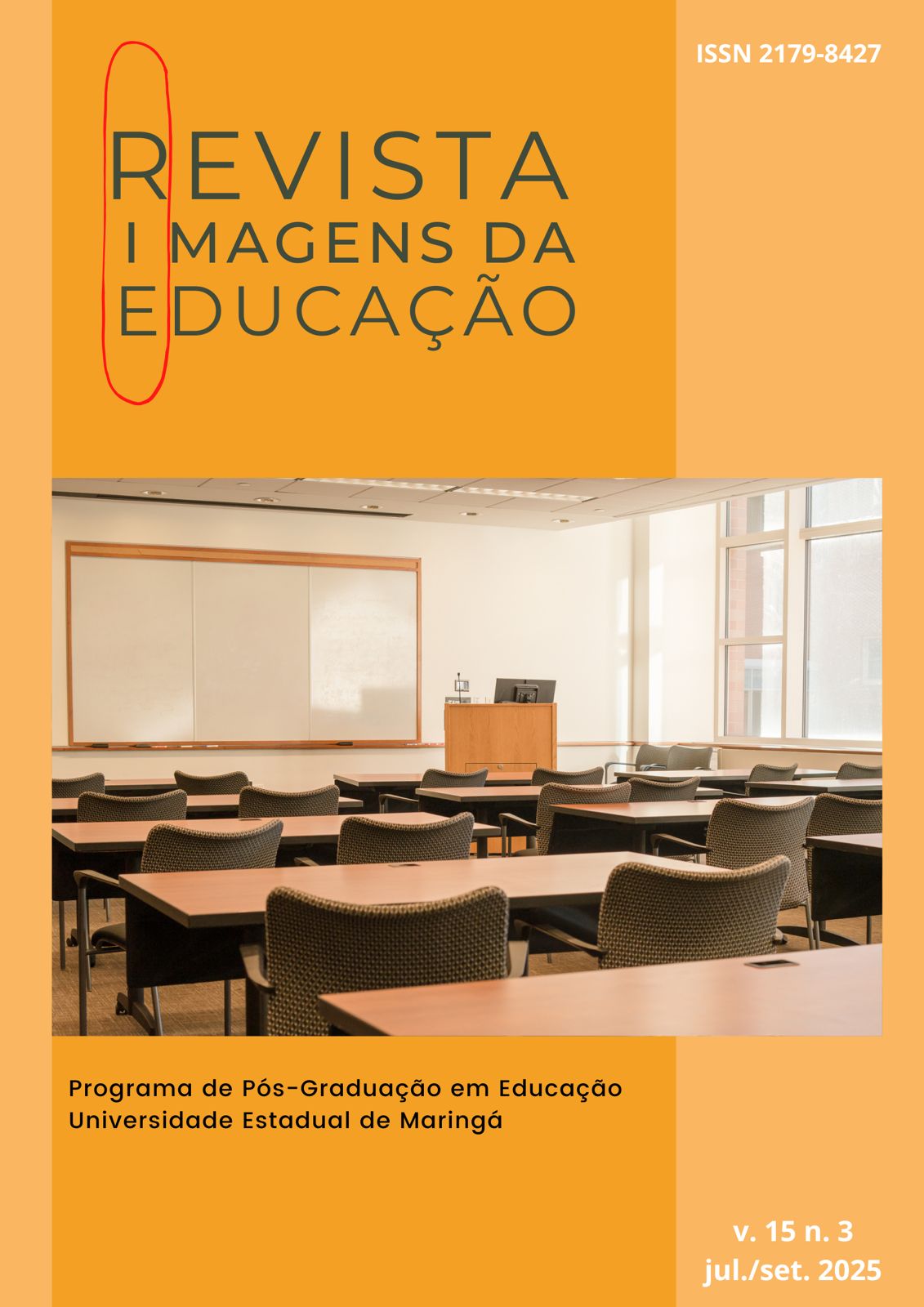SOCIAL NETWORKS IN TRAINING IN THE HEALTH AREA
AN INTEGRATIVE REVIEW
Abstract
The contemporary technological and cultural scenario has inaugurated innovative methods of promoting health, such as creating spaces to share experiences and reflect on practices, and the development of structures for the ongoing training of health professionals. Furthermore, it has provided opportunities for activities that already existed, such as: teaching, dissemination of knowledge and evaluation of health practices. Through the intelligent interaction of social networks in health education, it is possible to follow the rapid advancement of medicine and health practices. Therefore, the objective of this work is to identify in the literature, through an integrative review, how social networks can contribute to the training of health professionals. The search took place in the Medline (PubMed), EMBASE (Elsevier), and Virtual Health Library (VHL) databases, totaling 07 articles at the end of the search for analysis and construction of the article. When analyzing several studies, it is clear that social networks offer significant opportunities to promote interaction between students and health professionals, encouraging the sharing of information, the debate of clinical cases, access to educational content and engagement in communities of practice.
Downloads
References
Alencar, G. A., Moura, M. R., & Bitencourt, R. B. (2013). Facebook como plataforma de ensino/aprendizagem: O que dizem os professores e alunos do IF Sertão-PE. Educação, Formação & Tecnologias, 6(1), 86-93.
American Association of School Librarians/Association for Educational Communications and Technology. (1998). Information power: Building partnerships for learning. Chicago: Author.
Bernardes, V. P., et al. (2019). Facebook® como ferramenta pedagógica em saúde coletiva: Integrando formação médica e educação em saúde. Revista Brasileira de Educação Médica, 43(1), Supl. 1, 652-661.
Bueno, M. B. T., Bueno, M. M., & Moreira, M. I. G. (2021). O uso de tecnologias digitais e mídias sociais por profissionais da saúde no período da pandemia da COVID-19. Revista Thema, 20, 181–200. https://doi.org/10.15536/thema.V20.Especial.2021.181-200.1866
Boyd, D. (2014). It's complicated: The social life of networked teens. Yale University Press. Psicologia em Revista, 20(3), 624-627.
Cardoso, S. C. A. (2011). As redes sociais online, os jovens e a cidadania. [Master’s thesis, ISCTE-IUL]. Disponível em http://hdl.handle.net/10071/2011
Cassidy, J. D., Mullen, J. T., Gee, D. W., Joshi, A. R. T., Klingensmith, M. E., Petrusa, E., & Phitayakorn, R. (2020). #SurgEdVidz: Using social media to create a supplemental video-based surgery didactic curriculum. Journal of Surgical Research, 256, 680-686. https://doi.org/10.1016/j.jss.2020.04.004
Curran, V., Matthews, L., Fleet, L., Simmons, K., Gustafson, D. L., & Wetsch, L. (2017). A review of digital, social, and mobile technologies in health professional education. Journal of Continuing Education in the Health Professions, 37(3), 195-206. https://doi.org/10.1097/CEH.0000000000000168
Da Costa, M. A. S., et al. (2021). Integrando as redes sociais à comunicação científica na odontologia: Relato de caso. Revista Científica do CRO-RJ, 6(1), January - April. https://doi.org/10.29327/244963.6.1-8
Davis, K. (2015). Teachers’ perceptions of Twitter for professional development. Disability and Rehabilitation, 37(17), 1551-1558. https://doi.org/10.3109/09638288.2015.1052576
Dogoriti, E., Pange, J., & Anderson, G. S. (2014). The use of social networking and learning management systems in English language teaching in higher education. Campus-Wide Information Systems, 31(4), 254–263.
Franzca, R. H., Kjaer, C., Cheney, A. C., Naumovski, S., & Straw, B. L. (2019). Social network analysis of a simulation community. Simulation in Healthcare, 14(2), 71-76. https://doi.org/10.1097/SIH.0000000000000344
Grizzle, A., Moore, P., Dezuanni, M., Asthana, S., Wilson, C., Banda, F., & Onumah, C. (2016). Alfabetização midiática e informacional: Diretrizes para a formulação de políticas e estratégias. Brasília: UNESCO.
Khatoon, B., Hill, K. B., & Walmsley, A. D. (2015). Mensagens instantâneas na educação odontológica. Revista de Educação Odontológica, 79(12), 1471-1478.
Li, X., Gray, K., Chang, S., Elliott, K., & Barnett, S. (2014). A conceptual model for analysing informal learning in online social networks for health professionals. Studies in Health Technology and Informatics, 204, 80-85.
Marko, K. I., Ganju, N., Krapf, J. M., Gaba, N. D., Brown, J. A., Benham, J. J., et al. (2019). Um aplicativo móvel de atendimento pré-natal para reduzir consultas presenciais: Estudo prospectivo controlado. JMIR mHealth and uHealth, 7(5), e10520. https://doi.org/10.2196/10520
Merhy, E. E. (2002). Saúde: A cartografia do trabalho vivo. São Paulo: Hucitec.
Nascimento, L., & Garcia, L. (2014). Promovendo o protagonismo juvenil por meio de blogs e outras redes sociais no ensino de biologia. RENOTE, 12(1).
Nardi, A. V., Terra, E. A., Wenzel, M. C., & Cerutti, V. D. (2014). A influência do entretenimento no comportamento dos jovens. Revista Eletrônica, 5. Disponível em https://www.redeicm.org.br/revista/wpcontent/uploads/sites/36/2019/06/a2_entretenimento.pdf
Oliveira, R., et al. (2017). O uso de mídias sociais como ferramentas de auxílio aos estudos por alunos de uma instituição de ensino superior privada. Revista de Empreendedorismo, Inovação e Tecnologia, 3(2), 55-66.
Rankins, S. I. (2018). Potências do ciberespaSUS: Redes sociais como dispositivos de políticas públicas de saúde no Brasil. Ciência & Saúde Coletiva, 23(10). https://doi.org/10.1590/1413-812320182310.14082018
Saqr, M., Nouri, J., Vartiainen, H., et al. (2020). O que torna um grupo online baseado em problemas bem-sucedido? Um estudo de análise de aprendizagem usando análise de redes sociais. BMC Medical Education, 20, 80. https://doi.org/10.1186/s12909-020-01997-7
Stein, C. D., Eisenberg, E. S., O'Donnell, J. A., & Spallek, H. (2014). What dental educators need to understand about emerging technologies to incorporate them effectively into the educational process. Journal of Dental Education, 78(4), 520-529.
Viju, M. J. (n.d.). The role of web technologies and social media at higher education level in India. International Journal of English Language, Literature and Humanities.
Copyright (c) 2025 Imagens da Educação

This work is licensed under a Creative Commons Attribution-NonCommercial-NoDerivatives 4.0 International License.
DECLARATION OF ORIGINALITY AND CESSATION OF COPYRIGHT
I Declare that current article is original and has not been submitted for publication, in part or in whole, to any other national or international journal. I also declare that once published in the Imagens da Educação, a publication of the IES (UEM, UEL, UFSM, Univali, Unioeste and UEPG), it will not be submitted by me or by any co-author to any other journal. In my name and in the name of co-authors, I shall cede the copyright of the above mentioned article to the Universidade Estadual de Maringá and I declare that I know that the non-observance of this norm may make me liable for the penalties contemplated in the Law for the Protection of Authors' Rights (Act 9609 of the 19th February 1998).
Funding data
-
Conselho Nacional de Desenvolvimento Científico e Tecnológico
Grant numbers 23002018007P6















1.png)

